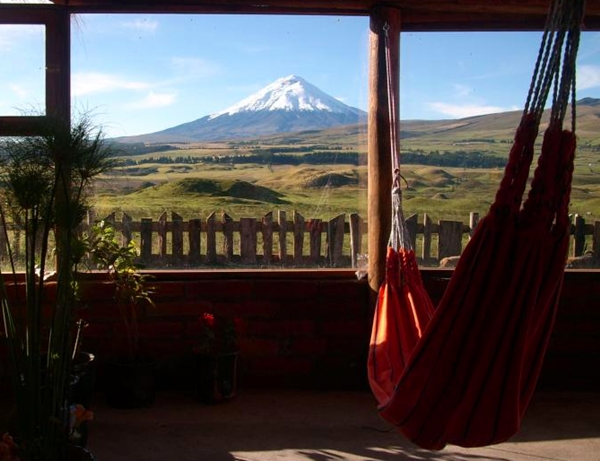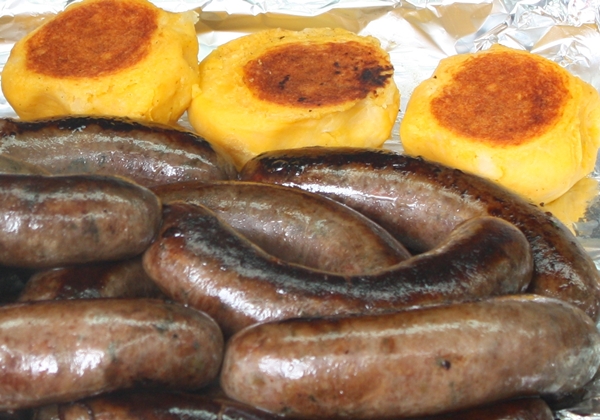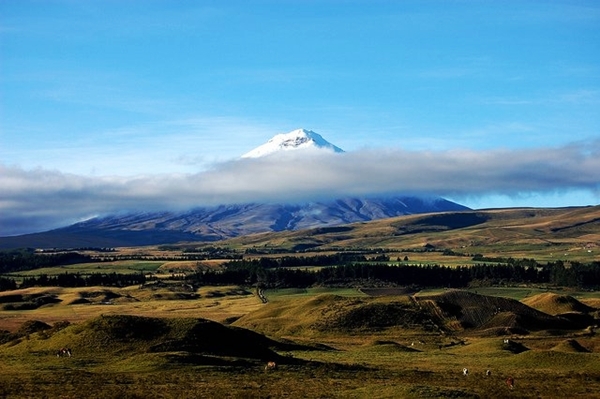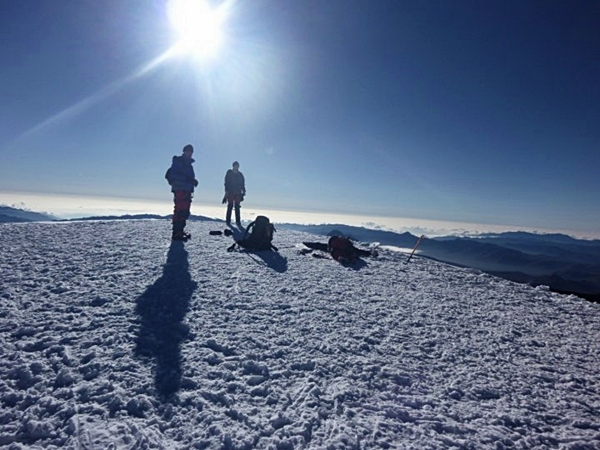Why go
Adventure travel in Ecuador, just as with the country’s vastly changing terrain, is something to be discovered. Within Ecuador’s borders are the Galapagos Islands, deep jungle regions and the mountains of the Andes. While the Galapagos are what most travelers think of when planning a once in a lifetime trip, two hours to the south of Quito are Cotopaxi volcano and the relatively unheard of Quilotoa loop. Set in the rural countryside, they both offer opportunities for a taste of Ecuador away from tourist spots while testing one’s limits.
Cotopaxi is Ecuador’s giant and can be seen high overhead from far away in any direction. Rising to 19347 feet, it was first summited in 1872 by geologist Wilhelm Rajss after many unsuccessful attempts starting in 1802. Today its snow covered peaks are the hurdles that find adventurous travellers attempting to conquer them to reach the summit.
The Quilotoa Loop is located close to Cotopaxi and is the undiscovered gem that many hope to find when researching the options and activities that Ecuador offers. The loop contains communities and villages that offer a glimpse into Ecuador’s vibrant past and the continuation of centuries old traditions. The Quilotoa crater with its stunning blue water and breathtaking views is just one of the highlights of making the three day trek.
For the thrill seeker, the Quilotoa Loop and the summit of Cotopaxi are a perfect pair and a must for all who are interested in combining adventure and active travel. Trekking the loop is the perfect way to acclimate to the thin mountain air before taking the leap and attempting to summit Cotopaxi.
Insider Tips
- December and January are good months for a trek, as they are almost as dry as the dry season (June through August) but less windy than the dry season. It's warmish all year round but rainy on and off outside the dry season.
- Knowing some Spanish is essential for getting around. Even if you're a novice, learning phrases and being able to ask directions in simple Spanish will save a lot of hassles. Most people are very receptive to beginners Spanish and appreciate the effort put forth. Hostels like the Secret Garden in Quito have two hour classes geared especially toward travelers.
- Travelling in the Andes requires some flexibility, as does Ecuador in general. Busses don´t arrive on time, people who you ask for directions will tell you an answer even if they don´t know and it’s important to check with the hostels listed below for reliable information.
- As the area is rural, bring cash with you as there are few cash machines. For items like batteries, camera accessories, and medicine such as aspirin, bring them from Quito as they are not available. It´s also a good plan to bring a book as the environment lends itself to relaxing in hammocks and electricity is sometimes not available all of the hours of the day.
- The mountain weather is pleasant. It’s warm during the day if clear and chilly during the night. Layers are the best way to go. Bring cotton or thermal first layer, a long sleeve warm second, and a sweater and light rain resistant jacket. As the altitude is very high, strong sunscreen is recommended. A good pair of walking or hiking shoe is a must as well as a water bottle. Bottled water is sold in stores but most hotels have purified water for their guests. A good headlamp or flashlight is also a good idea.
- The Mama Negro Festival is held twice a year in late September and early November. It’s a celebration that highlights the traditions and cultures of the local inhabitants’ origins – Spanish, Aymaran, Incan, Mayan and African. Two parades are held daily in Latacunga while the town is literally a party for the rest of the time. The actually event changes from year to year so check with local hostels for exact dates.
- Getting to Quilotoa: The start of the trek is traditionally undertaken in Latacunga, located three hours south of Quito. From Quito, busses run daily from the Southern Quitubre terminal. The cost is roughly a dollar an hour as a general rule of thumb for anywhere in Ecuador. The bus drops you in the center of town. Private transport can be arranged from Quito for between fifty and eighty dollars.
- Getting to Cotopaxi: by bus, it’s a straightforward process with many leaving from Quito hourly. From the Southern station any bus headed south will drop you off in Machachi, about two and a half hours away. The Secret Garden Hostel in Quito offers a private transport Monday, Wednesday, and Friday to their other hostel, The Secret garden, Cotopaxi for five dollars. Private transportation is roughly the same as to Latacunga and can be arranged through the same people who run the Garden´s services.
Where to Stay
The Quilotoa Loop
Hostel Tiana is located in Latacunga and offers a warm social setting for those making the trek; they have detailed itineraries, information about local markets and festivals, and operate Hostel Llullu Llama in Isinlivi, one of the smaller towns to visit in the region. The owners are Ecuadorian/Dutch and have years of experience guiding and advising those who are visiting. Hostel Tiana has a small café, and gladly stores bags not needed while their guests are away. The hostel is a small, comfortable building so make reservations ahead of time and well in advance if going during Mama Negro. Rates start at 8.50 per person for a dorm room and end at 18.50 for a private. Breakfast and taxes are included. The hostel's Web site includes a great map of the Quilotoa Loop.

The Black Sheep Inn further up the road is Ecuador’s first and most effective Eco-hostel. The owners made the move to Chugchilán in 1995 after traveling extensively in South America. They created a peaceful refuge to relax that proudly produces less than eight ounces of non-recyclable waste a day. The Inn created a recycling project, has solar power, and effectively combines comfort with purpose. Vegetarian meals, comfortable rooms, a sauna and hot tub, and personal touched like homemade brownies make getting to the off track destination well worth the journey. The owners are very active in the local community and it´s schools and are more than happy to share what they have accomplished with those who are interested. A short distance from the Inn is Tigua, small village on the main road to Zumbahua, which is famous for its art of the same name that dates back to the times when the Spanish conquistadors were building haciendas in the region.
The Blacksheep Inn is in Chugchilan, the closest town to the Quilotoa crater. Its amenities include a hot tub and sauna, a yoga studio, a gym, a water slide, and a zipline. Rates are all inclusive and cover breakfast, lunch, and dinner. They start from 35.00 per person for a bed in the bunkhouse and top off at 100 dollars for a deluxe private room.
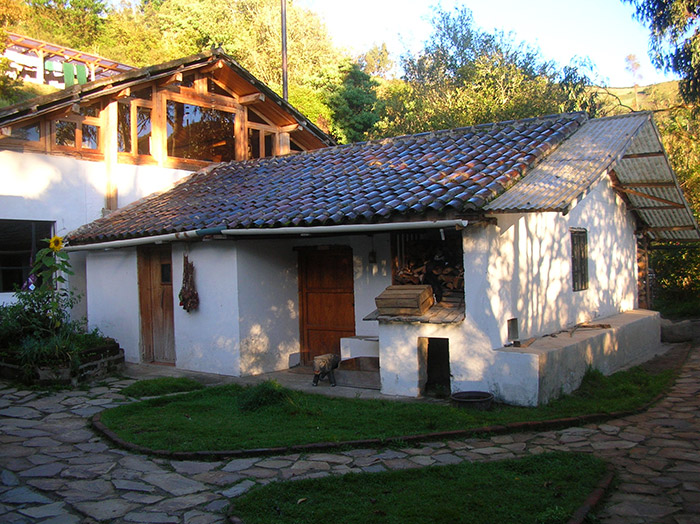
Cotopaxi
The Secret Garden Cotopaxi is one of the Andes hidden gems. It was built in the rural countryside outside of Machachi and is close to Cotopaxi National Park. The Ecuadorian/Australian owner’s hands on approach and their passion for showing guests the beauty and depth of the landscape and culture make it a must for any intrepid traveller.. They offer incredible three course meals cooked by the professionally trained owner and also have a Jacuzzi on premises. They are involved in reducing the footprint on the land as well and are constantly adding new innovations to their property as they become available. All meals are food grown in their greenhouse or bought by local farmers. They can arrange private transport, treks to the summit of the volcano, and are happy to personally lead tours to nearby waterfalls on their property. Rates include free use of the hot tub, breakfast, a light lunch, snacks, and a hearty dinner, and use of mountain bikes. They start at 32.50 for a dorm bed, 58 dollars for a tent cabin, and top off at 79.50 for a two story deluxe honeymoon suite. All room with the exception of the tent cabins have wood burning stoves which are lit before guests retire.
What to eat
Traditional regional food is a mix of potato, grain, and cheese. Starters include locro, a potato and cheese soup served with fresh avocado.
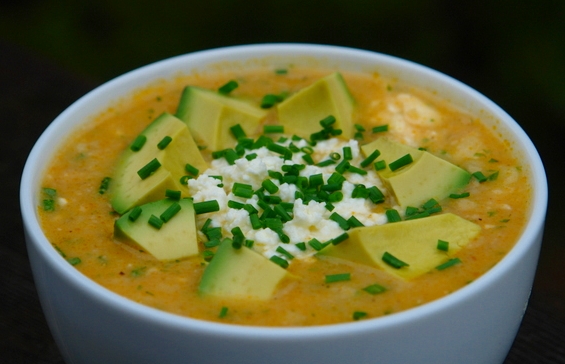
Llapingachos arepotato cakes stuffed most often with white farmers cheese and grilled until crispy brown, then served with sausage, chicken, pork and/orand fried eggs. For the adventurous there is Cuy, whole roasted guinea pig. Trucha or trout is plentiful in the mountains and well worth trying.
Don't miss a delicious lunch at Hacienda La Cienega in Cotopaxi. This Hacienda is one of Ecuador’s oldest and has been home to explorers and dignitaries. The restaurant has a wide variety of delicious food that ranges from seafood, meat, poultry, and pastas. Try the palm heart ceviche for starters and finish with handmade ice cream or a chocolate tart. The chef has been working at the hacienda since anyone can remember and the restaurant’s ambiance gives travelers the chance to dine where treaties were signed and explorers based themselves when first mapping the region.
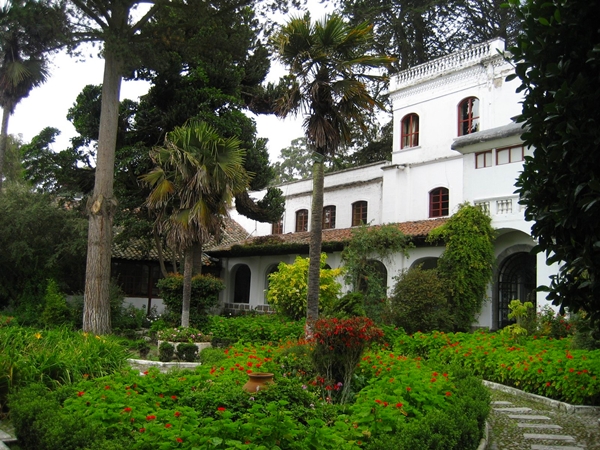
Dinner at Hosteria Tamboxi, also in Cotopaxi, is much simpler but also a good bet. The hosteria is an acclimation center, a hostel, and a restaurant that is both affordable and comfortable. They have many regional specialties but surprisingly, Swiss fondue is one of their specialties. It´s the perfect setting to enjoy a glass of wine while overlooking the volcano.
What to do
Quilotoa
From Latacunga, there are different options for hikes and markets to visit, each offering a glimpse into the culture of Ecuador not seen from tour busses.
Markets
Monday: Guantualo.
Tuesday: Latacunga.
Wednesday: Pujilí.
Thursday: Saquisilí, Salcedo.
Saturday: Latacunga, Zumbahua.
Sunday: Sigchos, Chugchilán, Guangaje, Pujilí
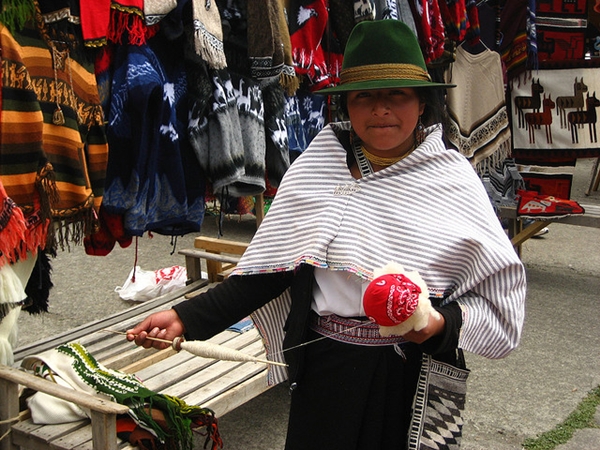
A three day itinerary for the Loop
Day one
Start in Latagunga and stay one night at Hostel Tiana. The next day catch a bus for a two hour journey to Isinlivi bearing in mind that the Thursday market in Saquisili is worth arranging your trip for. In Isinlivispend a night at Hostal Llullu Llama preparing for the next day’s hike to Chugchilian. The hostel has extensive information and maps about the route. The rates include a scrumptious dinner and breakfast the following morning. For a dorm bed expect to pay 18.00 per person and 21.oo for a private.
Day two
Hike from Isinlivi to Chugchilian; spend a night at the Black Sheep Inn.
Day three
Hike to the Quilotoa crater, catch a bus to local towns with markets or back to latacunga.
This itinerary can be done in three days or spread out to include more activities. Travel between towns is on busses and schedules change frequently. Local milk trucks also pick up those on the road for reasonable rates and private transport can be arranged through any of the hostels listed.
Cotopaxi
Using the Secret Garden Cotopaxi as a base, a three day trip could include the following.
Day one
Journey to the Garden in the morning from Quito. After getting to the hostel and having lunch, hike a few hours to the nearby waterfalls with the staff of the hostel and the Dalmatians that accompany each group. Enjoy the casual friendly social atmosphere with other guests at night or try out the hot tub.
Day two
Take a trip to the refuge in Cotopaxi National Park. The hike from the parking lot to the refuge is a challenge and then there is a strenuous trek up the glacier to the spot where climbers change into their gear. This is the last test for those who want to climb to the summit and after getting a feel to see what the air is like; summits can usually be arranged for the following day if pre-arranged and sized for gear beforehand. The Secret Garden offers a bike trip down from the refuge that covers a lot of ground quickly. After the thrill ride to the bottom, guests are picked up and bikes are stowed in the private transportation. Don´t be surprised if the rugged land rover stops along the way to pull out other vehicles that get stuck! The tour costs twenty-five dollars and there is an additional ten dollar fee for entrance into the park. Bike rental is also ten dollars. From the parking lot of the refuge it’s about twenty minutes to the base. Those who wish to can ride all the way back to the hostel which can be done in an hour but is usually longer when stopping to check out the local scenery.
Dinner at the Secret Garden/preparation for the Summit!
After a two course meal of locally grown and produced food, it’s time to gather ones spirits for the adventure to follow the next day. Climbers stay at the refuge with their guides and normally start the ascent at midnight. This is to ensure that they reach the top by sunrise and that the conditions make the trip possible.
Day 3
Summit Cotopaxi! Spend the wee hours of the morning on one of the most amazing and challenging peaks of the world. Expect to be challenged while climbing and expect the hikes up and down to take time. Climbing is slow going but experienced guides are well versed in helping those who take the trek on to the top.
Dutch Ecuadorean tour operator TribuTrek offers the trek for $220, including an Aseguim licenced guide, transportation, and full gear.
After the hike, relax at the hostel with celebratory drinks in the hot tub overlooking the volcano for a spectacular sunset to finish the trip. Additional nights are available but not guaranteed and transport can be arranged back to Quito or to Banos for rafting and bungee jumping. Banos is two hours south of Cotopaxi and costs between two and four dollars by bus. Private transportation can be arranged for seventy dollars.
The rugged peaks of the Andes and the towering volcanoes that the region possesses are ripe with opportunity for adventure and thrills. Part of the fun in going is exploring and discovering the landscape with new eyes and open minds. From the villages of Quilotoa to the top of Cotopaxi there lie new discoveries around every bend and corner. Find the right spots and mix with others interested in hiking and seeing why the sunny skies of Ecuador make everything a bit brighter.
Photos: Black Sheep Inn, Secret Garden Cotopaxi, Gary Soup, Belinda Joy Sheekey, e_mOy

